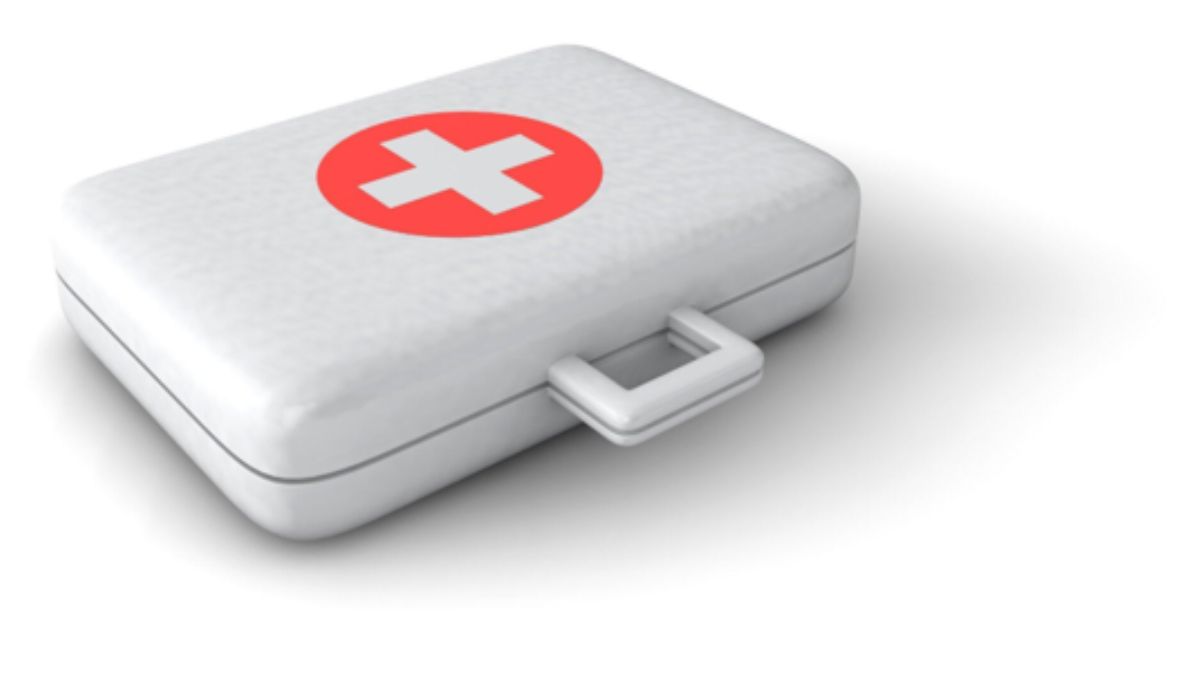HEALTH
Why Is the Role of Authorised Representatives in MedTech Compliance Crucial?

Given the MedTech nature of the products being marketed and sold, the products must be safe, effective, and meet the standards and regulations required in each country. No country or region offers a blanket rule that manufacturers can follow to market and sell their products. Regulations like these are put in place to protect patients, care providers, and the general public. However, the rules may be pretty complicated, and most companies often have dealings with operations in several countries. This is where the authorised representatives come in.
Authorised representatives are the champions who ensure all MedTech products meet the regulatory requirements so that regions in different parts of the world can safely utilise them. What do they do, and why are they important to MedTech? This blog discovers what an authorized representative is as well as why they are critical to maintaining compliance in MedTech.
Who is an Authorised Representative?
An approved representative is, on behalf of a manufacturer of medical technology products, acting in a specific country or region. Their main responsibility would be to ensure the manufacturer complies with local regulations regarding its products. They act as a link between the manufacturer and the regulatory authority and would help the manufacturer handle paperwork, registration, and approvals for medical devices.
For instance, an American MedTech company would like to penetrate the EU market. The company requires an authorised representative within the EU for the handling of all regulatory matters, ensuring that the product is compliant with all EU regulations, like the MDR, and related documents are correctly finalised.
Similarly, while the company intends to venture into the Saudi Arabian market, it would need an SFDA Authorised Representative who would ensure conformity with the rules of the Saudi Food and Drug Authority and would handle all the relevant documentation needed in the approval process.
Why Are Authorised Representatives Important?
Navigating Complex Regulations: Each country or region has its own distinct set of rules and regulations on medical devices. The rules may be very complicated and quite difficult to understand, especially for those who are new to the market or are not initiated by local laws.
Authorised representatives have expertise in the regulatory requirements of their region, which can help manufacturers avoid common pitfalls and thus ensure conformity with the required standard.
Acting as a Local Point of Contact: An authorised representative may be needed as a local point of contact. As a matter of fact, most regulatory authorities require a manufacturer to have a local contact for issues or questions that may arise regarding the manufacturing process, especially if they are based outside of the country from which the product is being sold.
With such local points of contact, it is easier for regulatory authorities to contact the manufacturer, and response time to any regulatory concern of the manufacturer is increased.
Managing Documentation and Compliance: There are also managerial roles such as documentation and compliance. Majorly, an authorised representative ensures that all the necessary documentation is ready for a product that may be legally sold in a certain market. This includes registration forms, product certifications, safety data, as well as quality management documents.
In other words, without adequate documentation, a product cannot be approved for sale, which could result in delays and financial losses for the manufacturer. Authorised representatives ensure that everything is sound, a big help to the manufacturer from arising problems.
Product Recalls and Safety Issues: In case there is a problem concerning safety once the product has been sold to the marketplace, the manufacturer would have to recall the same. During such incidents, the representatives are liable to perform the recall process in such a manner that it is undertaken as quickly as possible and safely so that neither the patient nor the public might be affected adversely.
They also assist the manufacturers in informing the relevant regulatory bodies about the safety issues and keeping them updated accordingly.
Support for Post-Market Surveillance: Once the medical device enters the market, its performance over time must be ensured not to have repeated shortcomings in terms of safety and quality. Post-market surveillance by authorised representatives serves the purpose of data collection on the performance of the product, handling complaints from customers, and reporting adverse incidents to the regulatory authorities. Hence, manufacturers continue to be in compliance even after their products have received marketing clearance.
How Authorised Representatives Benefit Manufacturers
To the MedTech manufacturers, the benefits are several. To begin with, they relieve manufacturers of the anxiety of meeting the requirements of compliance with local regulations. All risks of possible delays, fines, or eventual product recalls are minimised, which might be costly and damaging to a company’s reputation.
This will also save manufacturers precious time and money because designated representatives will deal with the regulatory side of the issues. No one has to waste countless hours trying to understand arcane regulations or paper-pushing to stay within the law. Manufacturers can focus on what they do best: designing and producing quality medical equipment.
Authorised Representatives and MedTech Industry: In a Nutshell
Regulatory compliance in the MedTech industry ensures the safety and effectiveness of medical devices. Authorised representatives will help manufacturers overcome some of the most complex regulations and deal with what seems to be an almost insurmountable volume of documentation that has been relevant to local authorities. Their expertise and local presence can prove most valuable for companies searching for new markets while staying compliant across regions.
Thus, mediation by authorised representatives allows manufacturers of MedTech products to concentrate on their core capabilities, ensuring nothing but the highest standards of safety and quality for the product.
HEALTH
Expert Plastic Surgeons Transforming Beauty and Confidence

Looking good often leads to feeling good. Many people choose plastic surgery to enhance their beauty and boost their self-esteem.
But choosing the right plastic surgeons are not easy. It requires careful research and consideration. This article will guide you through important tips to help you find an expert plastic surgeon who can transform your appearance and improve your confidence.
Check the Surgeon’s Credentials
The first step in finding an expert plastic surgeon is to check their credentials. Make sure the surgeon is board-certified by a recognized medical board.
Certification proves that the doctor has the right training and skills to perform plastic surgery safely. You can visit medical board websites to verify their license and check for any past complaints or issues.
Look at Before and After Photos
A good way to measure a plastic surgeon’s skill is by looking at their previous work. Most surgeons have photo galleries of past patients who have had similar procedures. Study these photos closely.
Look at the changes made, the natural look of the results, and whether the outcomes meet your expectations. These photos can give you a clear idea of the surgeon’s ability to enhance beauty while maintaining a natural appearance.
Read Patient Reviews and Testimonials
Reading what past patients say can help you decide if a surgeon is right for you. Look for reviews on websites, social media, and clinic pages. Positive reviews often highlight the surgeon’s skill, bedside manner, and how well they handle questions and concerns.
Be cautious of any surgeon who has many negative reviews or no reviews at all. Honest feedback from other patients gives you insight into the overall experience and satisfaction rate.
Consult and Ask the Right Questions
Booking a consultation is an important step in the decision-making process. During your consultation, ask about the procedure, the risks, the recovery time, and what results to expect. It is also a good time to see if you feel comfortable with the surgeon.
Good surgeons are patient, informative, and honest. They should not pressure you or make unrealistic promises. Also, ask if they offer non-invasive body treatments, especially if you are looking for options with shorter recovery times and less risk.
Consider the Clinic’s Facility and Staff
An expert surgeon should operate in a clean, accredited clinic or hospital. Make sure the facility meets safety standards and has modern equipment. Friendly and professional staff also make a big difference in your experience.
They help with scheduling, follow-ups, and answering questions. A well-organized and supportive team reflects a high level of care and professionalism from the surgeon and clinic.
All About Expert Plastic Surgeons
Choosing the right plastic surgeon is a big decision. Your safety, beauty, and confidence are at stake, so take your time and do the necessary research. Check credentials, review past work, read patient reviews, ask questions, and visit the facility.
These steps will help you find an expert who can deliver natural, beautiful results and improve your self-confidence. With the right surgeon, your journey to enhancing your appearance will be safe, smooth, and satisfying.
Looking for more tips and ideas? We’ve got you covered. Check out some of our other posts now.
HEALTH
What You’ll Learn in CPR & First Aid Training Courses

Have you ever wondered what you would do if someone collapsed in front of you or had a serious injury? It’s a scary thought, but being prepared makes a huge difference. CPR & First Aid training courses teach you exactly how to handle emergencies like this.
In this blog post, you’ll discover what skills you’ll learn, how these courses work, and why this training is so important. By the end, you’ll feel ready to take the next step toward saving lives.
Learn to Act Fast in Emergencies
One of the first things you’ll learn in CPR & First Aid training is how to stay calm when an emergency happens. These courses show you how to think clearly and take action when seconds matter. Whether someone has trouble breathing, is bleeding badly, or has passed out, knowing what to do right away can help save their life.
You’ll learn how to assess the situation, check for danger, and start helping before professionals arrive. These steps can make all the difference.
Discover the Power of CPR
CPR stands for Cardiopulmonary Resuscitation. It sounds complicated, but you’ll learn that it’s easy to do. CPR is a method used when a person’s heart stops beating.
You’ll find out how to push down on the chest in a steady rhythm and how to give breaths if needed. These actions help move oxygen through the body until help comes. CPR is a lifesaving skill, and anyone can do it once they are trained.
Understand How to Use an AED
An AED is a device that gives a shock to the heart to help it start beating again. During your training, you’ll learn how to use it step by step. The machine talks to you and tells you what to do, which makes it easier.
You’ll also learn where to find AEDs in public places and why quick use is so important. Using an AED right away can increase a person’s chances of survival, and you’ll be ready to do just that.
Learn to Handle Common Injuries
Every day, accidents happen all the time. Someone might cut themselves, fall, or have a burn. In CPR & First Aid training, you’ll learn how to help with these injuries.
You’ll find out how to clean and cover a wound, treat a burn, or wrap a sprain. You’ll also learn what not to do so you don’t make things worse. Knowing how to give the right care right away helps someone feel better and heal faster.
Be Ready for Choking and Allergic Reactions
Choking is another emergency that can happen suddenly. These courses show you how to spot the signs and what to do to help. You’ll learn how to perform back blows and the Heimlich method.
Allergic reactions can also be dangerous. You’ll learn how to use an epinephrine auto-injector and how to help the person stay safe until help comes. These are real situations that anyone could face, and now you’ll know what to do.
If you’re curious about even more topics covered in these lessons, get more info by visiting your local training center or health organization.
First Aid Training: The Power to Save Lives
Taking CPR & First Aid training courses gives you the skills to help others during some of life’s scariest moments. You don’t need to be a doctor or nurse. Just knowing what to do during an emergency can save lives.
These courses help prepare you for real-life emergencies in a simple, hands-on way. Did this guide help you? Browse the rest of this section for more advice on a variety of topics.
HEALTH
The Role of Community in Veteran Health and Wellness

Did you know that a strong community connection can play a transformative role in the health and wellness of our veterans? In recent years, studies have shown that social integration significantly boosts mental health and overall well-being, especially for those who have served in the military.
Veterans often face unique challenges, and having a supportive community can be a crucial factor in their recovery and sustained health. This article explores the vital importance of a community in veteran health and how senior living options can enhance their overall quality of life. Keep on reading.
The Importance of Community in Veteran Well-Being
For veterans transitioning back into civilian life, the shift can often feel overwhelming. Many struggle with feelings of isolation and alienation from those who haven’t shared similar experiences. This is where a sense of community becomes essential.
A supportive network helps veterans feel connected and valued. In senior living environments, fostering a community spirit can lead to:
A Sense of Belonging
Veterans often feel better when they know others share their past. Living with peers who understand can make them feel safe. This helps build real friendships and trust.
Improved Mental Health
Being around others can ease sad or anxious thoughts. Talking, laughing, and sharing stories helps the mind. These small moments lift spirits each day.
Physical Health Benefits
Group activities like walks or games keep the body moving. Staying active with others can be more fun. It helps veterans stay strong and feel better.
Easy Access to Resources
A strong group can guide members to helpful tools. It’s easier to ask for help when others understand. Veterans find what they need without feeling lost.
How Senior Living Enhances Social Connections
Many places where seniors live are made to feel like a strong community. Some have special programs just for veterans. These programs help them feel supported and connected with others.
There are group trips, fitness classes, and other fun things planned for veterans. These keep them busy, happy, and moving. It also helps them meet people who understand them.
Some places also give extra care for mental health. Veterans can talk to people who know about things like PTSD. Being around others with similar stories can help them feel less alone.
Building Supportive Care Frameworks
Supportive care is more than just meeting physical needs; it’s about holistic wellness that encompasses emotional, mental, and social aspects. Within a community-focused approach, veterans can tap into:
- Peer support groups
- Integrative wellness programs
- Access to healthcare
The Unique Proposition of Community-Focused Senior Living
Choosing a senior living arrangement that emphasizes community focus provides veterans with the unique opportunity to enhance their quality of life. Not only can they maintain independence, but they can also engage in a variety of activities designed to foster relationships and an active lifestyle.
Facilities that prioritize a community focus in veteran health often include programming tailored specifically for them. They offer more than just a place to live. Veteran programs for seniors create a supportive atmosphere promoting veteran wellness through engagement, shared experiences, and friendship.
Invest in Your Health and Well-Being Today!
If you or a loved one is a veteran looking for a welcoming community, consider exploring options that offer comprehensive support and a vibrant community in veteran life. With a focus on wellness and connection, you can conquer the challenges of daily living and thrive among peers who understand and appreciate your journey. Your health and well-being deserve a community that cares.
For more related topics, check out the rest of our blog!
-

 HEALTH1 year ago
HEALTH1 year agoIntegrating Semaglutide into Your Weight Loss Plan: A Practical Guide
-

 HOME IMPROVEMENT1 year ago
HOME IMPROVEMENT1 year agoHow to Choose the Perfect Neutral Area Rug for Every Room
-

 LAW1 year ago
LAW1 year agoPost-Divorce Considerations in California: Modifications and Long-Term Planning
-

 LAW1 year ago
LAW1 year agoTeenage Drivers and Car Accidents in California: Risks and Parental Liability
-

 CONSTRUCTION1 year ago
CONSTRUCTION1 year agoConstruction Site Safety Regulations in New York and Your Rights as a Worker
-

 FINANCE1 year ago
FINANCE1 year agoDigital Asset Management in Florida Estate Planning
-

 LAW1 year ago
LAW1 year agoKentucky’s School Football: Concussions, Injuries, and Legal Options
-

 LAW1 year ago
LAW1 year agoGang Activity and Criminal Charges in CA: Protecting Your Rights
